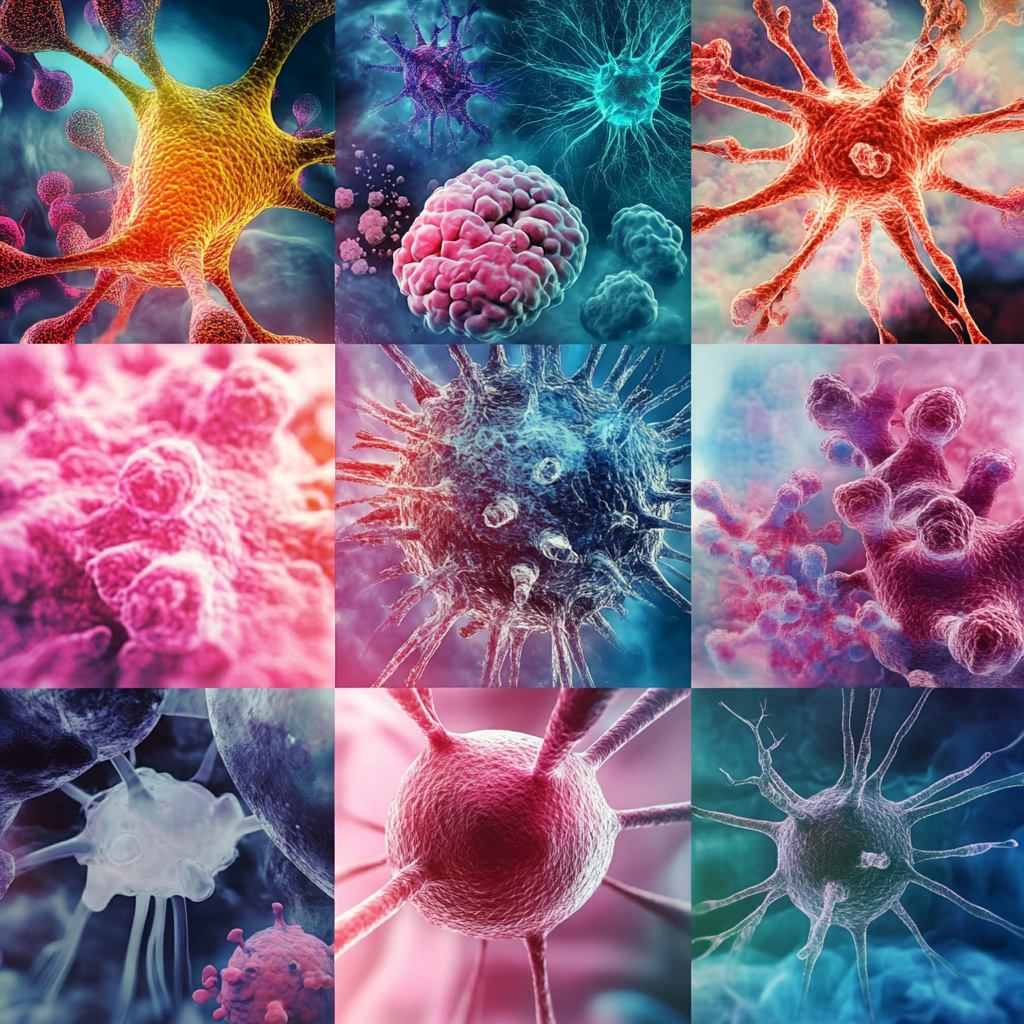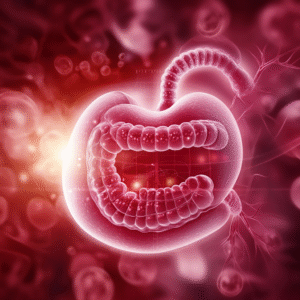Recognizing the Signs: A Comprehensive Guide to Common Cancer Symptoms
Table of Contents
- Introduction: Why It’s Crucial to Spot Cancer Symptoms Early
- Understanding Cancer: A Brief Overview
- Common Types of Cancer and Their Key Symptoms
- Conclusion
- Disclaimer
1. Introduction: Why It’s Crucial to Spot Cancer Symptoms Early
Cancer encompasses a large group of diseases involving abnormal cell growth, which can invade and damage surrounding tissues. Early detection significantly increases the likelihood of successful treatment and improves quality of life. Unfortunately, many people discover they have cancer only once it has reached an advanced stage, when it becomes harder to treat. That’s why knowing the warning signs and seeking professional help as soon as symptoms arise is absolutely critical.
While “cancer” may sound like a dire, all-encompassing threat, it’s important to remember that not all cancers are alike. Each type can manifest differently, with its own specific set of symptoms and progression patterns. Many early indicators of cancer can be subtle or mimic everyday ailments. The key is to remain vigilant about unusual or persistent changes in your body and consult an oncologist or another qualified medical professional if something feels wrong.
2. Understanding Cancer: A Brief Overview

Cancer begins when cells undergo mutations that disrupt their normal life cycle—new cells form when the body does not need them, and old or damaged cells refuse to die. These abnormal cells may accumulate into a mass known as a tumor. Some tumors remain confined (benign), whereas others invade nearby tissues and can spread through the bloodstream or lymphatic system, resulting in metastases.
- Risk Factors: Age, genetics, lifestyle choices (such as smoking or diet), environmental exposures, and pre-existing medical conditions can all influence cancer risk.
- Immune System Role: A healthy immune system often destroys abnormal cells before they become problematic. However, various factors (including chronic stress, immunodeficiency, or severe illness) can weaken this defense, allowing mutated cells to thrive.
Recognizing symptoms early—whether they’re subtle or dramatic—can help patients seek timely treatment. While cancer can be life-threatening, many forms are highly treatable, especially when detected in the initial stages.
3. Common Types of Cancer and Their Key Symptoms

3.1 Intestinal Cancer
Intestinal cancer typically occurs in the colon (large intestine) but can sometimes appear in the small intestine. In individuals over 45, colon cancer ranks among the most prevalent malignant tumors. Early stages rarely present clear symptoms, making regular screenings vital.
Possible Symptoms:
- Persistent changes in bowel habits (diarrhea alternating with constipation)
- Cramping or sharp abdominal pain
- Anemia (fatigue, weakness, pallor)
- Frequent bloating or fullness, especially on the left side of the abdomen
- Partial bowel obstruction
- Dark or black stool (possible indication of bleeding)
Because early signs are so often missed, many people only receive a diagnosis at an advanced stage. Paying close attention to your digestive health and having regular check-ups can significantly improve outcomes.
3.2 Rectal Cancer
Rectal cancer often develops from pre-existing chronic conditions such as inflammatory bowel disease or long-standing polyps. Individuals with a history of chronic intestinal disorders should undergo regular medical examinations.
Key Symptoms:
- Anemia
- Pain or discomfort in the lower abdomen and perineum, especially during defecation
- Fatigue and general weakness
- Mucus or pus discharge
- Frequent false urges to defecate
- Fecal incontinence or difficulty controlling gas
- Blood in the stool
Notably, rectal bleeding is a concerning sign that typically indicates an advanced tumor. Even though it may be the first warning symptom many patients notice, it underscores the importance of seeking immediate medical advice.
3.3 Stomach Cancer
Stomach cancer ranks among the most common malignancies globally. Early detection poses a challenge because initial symptoms can mimic less severe conditions like indigestion or gastritis.
Early Signs:
- Mild discomfort or fullness in the abdomen
- Heartburn, occasional nausea, or vomiting
- Weakness, fatigue, and reduced work capacity
- Slight but persistent loss of appetite
- Headaches or general malaise
Advanced Symptoms:
- Significant, unexplained weight loss
- Sudden aversion to food (anorexia)
- Bloating
- Visible or microscopic gastrointestinal bleeding
- Rapid feeling of fullness when eating
- Jaundice if the liver or bile ducts are involved
- Anemia
Because these symptoms overlap with everyday digestive issues, people often disregard them until they intensify, delaying diagnosis and treatment.
3.4 Pancreatic Cancer
Pancreatic cancer is notorious for remaining asymptomatic until it advances enough to compress nearby organs or block ducts. By this stage, more severe health issues usually emerge.
Initial Signs:
- Mild heaviness or discomfort in the upper abdomen
- Persistent thirst
- Decreased appetite, occasional nausea, and fatigue
- Elevated blood sugar levels
- Frequent loose stools
Progressive Symptoms:
- Intense abdominal pain radiating to the back
- Jaundice if bile ducts become obstructed
- Unintentional weight loss
Because these indicators can be vague, routine check-ups are especially critical for people at higher risk (e.g., those with a family history of pancreatic disease).
3.5 Breast Cancer
Breast tissue comprises glandular, connective, and fatty tissues. Breast cancer typically originates in the glandular component. Although women are at greater risk, men can also develop this disease—albeit far less frequently.
Key Symptoms:
- Palpable lumps or unusual thickening in the breast
- Asymmetry: one breast changing in size or shape
- Skin puckering or dimpling (“orange peel” effect)
- Redness, inflammation, or ulceration on the breast or nipple
- Nipple discharge (bloody, milky, or purulent)
- Changes in the nipple’s position or texture
- Unexplained swelling in the underarm lymph nodes
Early breast cancer detection is highly dependent on regular self-exams and routine mammograms. When found early, many breast cancers are treatable with surgery, chemotherapy, radiation, or targeted therapies.
3.6 Liver Cancer
Liver cancer develops when normal liver cells undergo malignant transformation. In many cases, the disease evolves against a backdrop of long-standing inflammation, such as cirrhosis or chronic hepatitis. Specialists categorize liver cancer as primary (originating in the liver) or secondary (metastases from other organs).
Early Warning Signs:
- Frequent constipation or diarrhea
- Chronic fatigue and weakness
- Lower appetite and unexplained weight loss
- Bloating or general abdominal discomfort
- Intermittent nausea or vomiting
- Occasional fever or chills
- Elevated body temperature
Further Symptoms:
- Digestive disturbances (diarrhea, bloating, constipation)
- Pain in the abdomen from tumor growth
- Fluid accumulation leading to ascites
- Jaundice (yellowing of the skin and eyes)
Given that these symptoms are non-specific, they can mimic those of hepatitis or gallbladder disease. Healthcare providers often rely on imaging studies, blood tests (like AFP levels), and biopsies for an accurate diagnosis.
3.7 Throat Cancer
Throat (laryngeal) cancer involves malignant growth in the tissues of the pharynx or larynx. Smoking, frequent alcohol use, and exposure to harmful chemicals are among the leading risk factors.
Initial Symptoms:
- Mild soreness or feeling of dryness in the throat
- Sensation of a foreign object when swallowing
- Early morning throat pain or persistent discomfort
Progressive Signs:
- Difficulty swallowing (dysphagia)
- Hoarseness or muffled voice
- Pain intensifying during meals
- Chronic fatigue
- Breathlessness or stridor in advanced stages
These indicators can overlap with common conditions like laryngitis or pharyngitis. Continuous hoarseness or throat pain that does not improve with standard treatments should prompt immediate medical evaluation.
3.8 Lung Cancer
Lung cancer originates from the cells lining the bronchi and alveoli. It is highly aggressive, often spreading beyond the lungs if not addressed early.
High-Risk Factors:
- Long-term smoking (primary cause)
- Environmental exposures (radon gas, asbestos, secondhand smoke)
Typical Symptoms:
- Persistent, intense cough
- Coughing up blood (hemoptysis)
- Chest pain or discomfort
- Hoarseness
- Wheezing
- Sudden, unexplained weight loss
Due to lung involvement in oxygenation, systemic symptoms like fatigue, shortness of breath, and generalized weakness frequently accompany the disease.
3.9 Cervical Cancer
One of the most common types of cancer in women, cervical cancer typically affects individuals between 35 and 55. Human papillomavirus (HPV) infection is a major risk factor.
Typical Symptoms:
- Vaginal bleeding unrelated to menstrual cycles or post-menopausal bleeding
- Foul-smelling or bloody discharge
- Persistent pelvic or lower back pain
- Painful intercourse and vaginal dryness
- Rapid weight loss
- Frequent or painful urination, possibly with blood in the urine
- Excessive sweating, often without other signs of infection
Regular pap smears and HPV vaccinations are crucial for early detection and prevention.
3.10 Skin Cancer
Skin cancer appears as an abnormal growth on the skin’s surface. Although it’s one of the most common cancers, not everyone recognizes its early manifestations. Tumors may be pigmented or non-pigmented.
Primary Symptoms:
- New or evolving skin lesions
- Non-healing sores or ulcers
- Unusual growth that bleeds, itches, or scabs over repeatedly
- Pain, burning sensations, or itching
- Localized lymph node swelling
- Skin discoloration around the lesion
Monitor moles or freckles that change in size, shape, or color, and consult a dermatologist if any suspicious growths appear.
3.11 Ovarian Cancer
Ovarian cancer arises from uncontrolled cell growth in one or both ovaries. It typically remains asymptomatic in early stages, making advanced detection more common.
Common Symptoms:
- Chronic bloating and abdominal swelling
- Decreased appetite or feeling full quickly
- General weakness or malaise
- Gastrointestinal issues (gas, constipation, nausea)
- Accumulation of fluid in the abdomen (ascites)
- Pleural effusion leading to breathing difficulties
- Swelling in the lower extremities
- Possible metastases to the liver, lungs, or bones
Women should be attentive to subtle, persistent changes in abdominal comfort and consult their physician for any prolonged discomfort or bloating.
3.12 Brain Cancer
Brain cancer occurs less frequently than other malignancies but can be extremely aggressive. Tumors may develop from the brain’s own cells or metastasize from other sites.
General (Intracranial) Symptoms:
- Sudden dizziness, fainting, or episodes of nausea and vomiting
- Persistent fatigue and drowsiness
- Vision problems or hallucinations
- Frequent headaches that worsen with rapid head movement and do not respond to medication
- Disorientation or impaired coordination
Focal Symptoms (Depending on Tumor Location):
- Sensory changes (numbness or weakness in limbs)
- Difficulty with speech, memory, or cognition
- Seizures or muscular spasms
MRI or CT scans are typically required to identify a brain tumor’s location and extent.
3.13 Kidney Cancer
Kidney cancer can present as a single tumor or multiple lesions within one or both kidneys. The cancerous cells gradually erode healthy kidney tissue, releasing toxins into the bloodstream that can result in significant systemic effects.
Common Indicators:
- Elevated blood pressure
- Metabolic imbalances (protein breakdown disorders)
- Unintentional weight loss or overall wasting
- Fever and chills
- High erythrocyte sedimentation rate (ESR), anemia, or hypercalcemia
- Abnormal liver function tests
Symptoms like persistent flank pain or blood in the urine should never be ignored. Timely imaging studies and lab tests are crucial for definitive diagnosis.
4. Conclusion
Cancer is a multifaceted disease with countless variations, each capable of presenting with a unique cluster of symptoms. While some forms remain silent until advanced stages, others may offer early warning signals like unusual bleeding, persistent pain, or unexplained changes in bodily functions. Regardless of the specific type, vigilance is key. By knowing what to watch for, you give yourself or your loved ones the greatest chance of catching the disease in its most treatable phase.
Additionally, leading a healthy lifestyle—avoiding harmful habits, staying physically active, and attending regular medical check-ups—can significantly decrease your overall cancer risk and help you detect any issues at the earliest possible stage.
5. Disclaimer
This article is intended for informational purposes only and should not be used as a substitute for professional medical advice, diagnosis, or treatment. Always consult a qualified healthcare provider if you experience any concerning symptoms or have questions regarding your medical condition. Early, accurate diagnosis and timely intervention are essential for successful cancer management and optimal patient outcomes.


